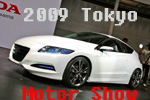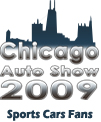2009 BMW 7 Series

BMW has officially announced the details pertaining to the 5th generation 7 Series, so let's cut right to the chase. In Europe, there are five models arriving on the market in November of this year: the 730d; the 740i and Li; and the 750i and Li. The latter two are powered by the same twin-turbo 4.4L V8 that debuted in the X6. In the U.S.-market 7 Series, the turbo eight is rated at 400 horsepower and 450 lb-ft of torque, and it is the sole engine option being made available. If you want a BMW 7 Series in America, it will be a 750.
Europeans get more choices. The 730d's 3.0L diesel I6 pumps out 245 horses with nearly 400 lb-ft of torque. Despite the grunt, it boasts a combined fuel economy number of 32.6 U.S. miles per gallon (39.2 Imperial). The 740 models are powered by the now-familiar 3.0L twin-turbo gasoline engine. In the 7, the 3.0TT's power output is 326 horses and 332 lb-ft -- enough to hustle the 740Li from 0 to 62 mph in six seconds flat. All the engines are connected to a six-speed automatic.
We went over the car's outward appearance in our preview post. The new car is certainly more restrained than the last iteration, but reader feedback has shown that its style still polarizes. This is unsurprising, and ultimately, it's probably good for BMW because either way, you have people speaking passionately about your car. Besides, the people whose opinions matter most are the ones in dealerships, holding checkbooks, and there likely won't be a shortage of those folks when these cars roll into showrooms, anyway.
Inside, there are a number of improvements. First, the shifter moves back to the console from the steering column. The unit itself is the same silver lever you'll find in a 5-series. To its right is the new iDrive controller, which steals a page from Audi's MMI and combines the main stick/dial with action buttons that ought to streamline the process of navigating through all the menus. The menus themselves have also been redesigned, and in a welcome move, the climate controls can be fully adjusted right from the instrument panel -- iDrive is no longer required to make some adjustments at all. The actual iDrive screen is now over 10 inches wide. Other neat-sounding interior changes we're interested in seeing in person include the new Black Panel display for the IP. Basically, only the gauge rings and needles are visible when the car is shut off. The other details only reveal themselves once it has been fired up. Backseaters get a pair of video screens, and each passenger has control over what his or hers displays.
The camera package incorporates both rearview and sideview cameras. The latter uses a camera mounted in each corner of the front bumper to give a clear look down an intersecting road in both directions. (This sounds like an improved version of the setup BMW uses in the Rolls-Royce Phantom, which puts both cameras in a single protrusion in the middle of the front bumper). Active steering is optional, lane departure and blind spot warning systems arrive with the new car, and the Euro versions get a brake regeneration system like the one found in the European M3. (As is the case with the M3, it doesn't appear that this feature makes the trip across the Atlantic in the 7.)















